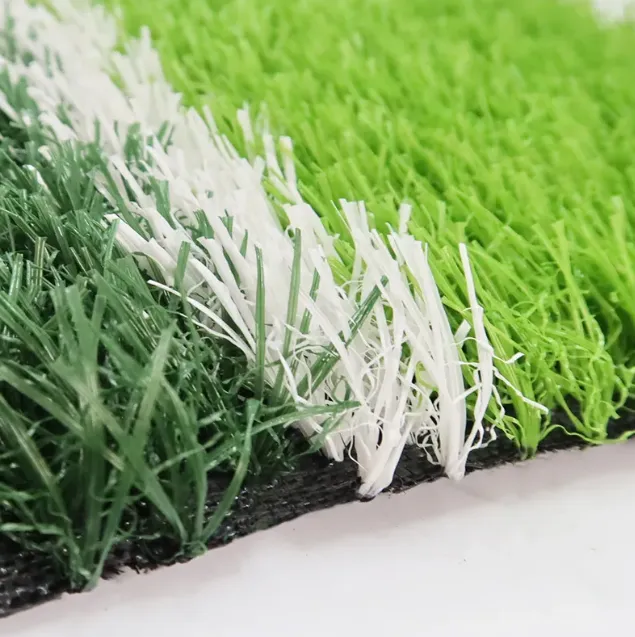
- Afrika
- Arab
- Belarusia
- Benggala
- Ceko
- Denmark
- Belanda
- Bahasa inggris
- Esperanto
- Estonia
- Finlandia
- Perancis
- Jerman
- Orang yunani
- Tidak
- Hongaria
- Bahasa Islandia
- Indonesia
- Irlandia
- Italia
- Jepang
- kazakh
- Rwanda
- Korea
- Bahasa Kirgistan
- TBC
- Latin
- Latvia
- Melayu
- Bahasa Mongolia
- Myanmar
- Norwegia
- Persia
- Polandia
- Portugis
- Rumania
- Rusia
- Serbia
- Spanyol
- Swedia
- Tagalog
- Tajik
- Thai
- Turki
- Turkmen
- Ukraina
- Urdu
- Uighur
- Bahasa Uzbek
- Vietnam
The Rise of Artificial Turf in Modern Football and Soccer Fields
Mei . 30, 2025 13:37 Kembali ke daftar
Artificial grass has transformed the landscape of sports, particularly in soccer and football. Once seen as a mere alternative to natural grass, today’s artificial turf offers performance, durability, and aesthetics that rival — and often surpass — traditional options. Whether it's a community football ground or a professional soccer field, synthetic turf provides consistent playing conditions with reduced maintenance and greater year-round usability.
In this article, we explore the growing popularity of artificial grass for soccer and football fields, the different types available, and the advantages it brings to players, teams, and facility owners.

Why Artificial Grass is Ideal for Soccer Fields
The use of artificial grass for soccer has gained global traction for several reasons. First, artificial turf fields require significantly less maintenance than natural grass. There’s no need for mowing, watering, or fertilizing — making it a more sustainable and cost-effective choice in the long run.
Key benefits of artificial grass for soccer fields include:
Consistent Surface: Unlike natural grass, which can become uneven due to weather or wear, synthetic turf offers a level, predictable playing surface.
All-Weather Playability: Rain or shine, artificial turf remains usable, reducing match cancellations and improving practice schedules.
Player Safety: Modern turf systems are designed with shock-absorbing layers and infill materials that reduce injury risk and simulate the feel of natural grass.
Durability: A well-installed artificial field can handle thousands of playing hours per year, accommodating multiple teams and events.
Artificial turf is particularly popular in urban areas where water resources are limited, or where natural grass struggles to survive due to climate or soil conditions. It’s now common to see artificial soccer fields in schools, sports complexes, and even professional stadiums.
The Evolution of Artificial Grass for Football Fields and Grounds
Artificial grass for football fields has also seen remarkable innovation. Football, with its heavier player loads and more intense contact, requires a turf system that can withstand serious wear and tear. Early synthetic surfaces were often criticized for being too hard or increasing injury risk, but today’s turf technologies are purpose-built for demanding sports.
Features of High-Performance Artificial Grass for Football Grounds:
Dual-fiber technology: Combines durability and softness for optimal play.
Infill systems: Often made from rubber granules and sand to provide cushioning and stability.
Drainage layers: Ensure quick drying and reduce puddling.
UV resistance: Maintains color and structural integrity under the sun.
Menginstal artificial grass for football grounds means fewer cancelled games, lower maintenance costs, and year-round usability. It also provides a safer and more predictable surface, especially important in youth football programs where player protection is a top priority.
For large clubs and municipalities, the long-term savings from water and maintenance alone can justify the upfront cost of synthetic installation.
Artificial Football Turf vs. Natural Grass: A Practical Comparison
Artificial turf also allows for multi-sport usage. A single field can host soccer, football, rugby, and other athletic events without requiring turf recovery or regrowth. This flexibility is a major advantage for schools and sports parks.
Furthermore, artificial football turf comes in multiple pile heights, densities, and fiber shapes to suit different levels of play — from recreational use to professional-grade systems approved by FIFA or World Rugby.
The growing adoption of artificial grass for soccer and football fields is not a passing trend, but a practical response to the demands of modern sports. Whether you're planning a new football ground or upgrading an existing soccer field, artificial turf offers unmatched efficiency, durability, and playability.
From community recreation areas to high-level stadiums, synthetic turf provides consistent performance, lower upkeep, and greater access for athletes of all levels. With technology continuing to advance, artificial turf is set to remain a cornerstone of the sporting world.
-
Canine Turf A Perfect Solution for Dog Owners
BeritaJun.17,2025
-
Artificial Grass Basketball Courts Durability And Joint Protection
BeritaJun.17,2025
-
Understanding Artificial Plant Grass Costs and Uses
BeritaJun.09,2025
-
Enhancing Play Areas with Synthetic Turf For Playground
BeritaJun.09,2025
-
A Perfect Garden Solution About Pet-Friendly Artificial Grass
BeritaJun.03,2025
-
The Rise of Artificial Grass in Modern Football Infrastructure
BeritaMay.30,2025
Kategori produk









